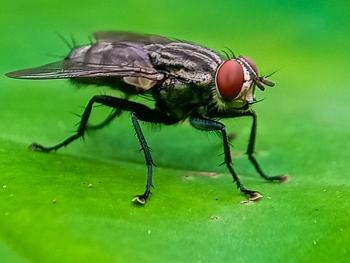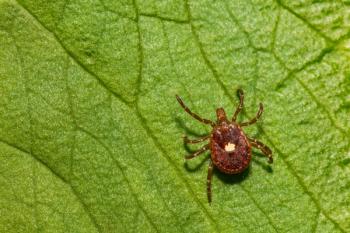
Heartworm update (Proceedings)
The challenging area of heartworm prevention and control has become even more challenging in the past few years as new information becomes available.
The challenging area of heartworm prevention and control has become even more challenging in the past few years as new information becomes available.
Temporary unavailability of melarsomine
As of writing this summary (August, 2011), the American Heartworm Society (AHS) has just issued recommendations for management of heartworm infection in anticipation of a shortage of melarsomine (Immiticide) for an unknown period. Because there is no other adulticide available, practitioners will need to use other protocols to support diseased animals and reduce the risk of transmission. These guidelines are available in PDF format from the AHS webpage:
Dogs testing positive on an antigen test or which have not received a full course of treatment should have infection verified by a second test from a different manufacturer. It is important to keep positive dogs on preventive to prevent further infection and potential transmission from infected dogs. However, all antigen positive dogs should also receive a test for microfilariae (MF) because in rare cases a microfilaremic dog may develop a shock-like reaction after administration of heartworm preventive. To control a possible reaction, before receiving a dose of macrolide preventive, an infected dog with MF should be pretreated with corticosteroids (with or without antihistamines) and kept under professional observation for at least 8 hours.
The AHS also recommends that antigen positive dogs be treated with doxycycline at 10 mg/kg BID (dose can be lowered to 5 mg/kg if necessary) for 1 month in a schedule of 1 month on, 2 months off, 1 month on, etc. Doxycycline reduces the viability of heartworms though its effect on the symbiotic bacteria Wohlbachia. Macrolides plus doxycycline are more effective than macrolides alone in reducing the viability of adult worms and limiting the pathologic changes associated with heartworm. Doxycycline also reduces the potential for successful transmission from mosquitoes. However, the combination of macrolides and doxycycline does not eliminate worms and should NOT be considered an alternative adulticide treatment.
Heartworm infected dogs should be managed as described above until melarsomine is available again. At that time, dogs should be retested to confirm that adult worms are still present before undertaking treatment.
Dirofilaria in Western States.
While heartworm has been recognized as an endemic problem in eastern and Midwestern states for many years, many practitioners in western states report little evidence of infection in their practice areas, despite surveys showing that the parasite has been reported from all 50 states. Novartis conducted a survey of canine and feline infection in 2005 in 11 western states (Arizona, California, Colorado, Idaho, Montana, Nevada, New Mexico, Oregon, Utah, Washington and Wyoming). Infection was recorded in all 11 states. From Januarary-May 2010 a second survey was conducted. Practitioners were also asked about their heartworm recommendations and testing. About 1000 surveys were returned (out of about 6000 solicited). As in 2005, heartworm cases were reported in all 11 states.
Findings of particular interest include:
· California had the highest number of cases of infection in dogs and cats.
· Wyoming had the lowest number of infected dogs reported (8) and reported no cases of infection in cats.
· Of the 1640 cases of canine heartworm reported in the survey, 27.5% were in dogs known to be from outside the local region, but 58.2% were reported in local dogs that had been born and raised in the immediate area.
· Not surprisingly, the number of feline cases of heartworm infection was much lower than the number in dogs. However, of the 110 cases reported, 82.7% were in cats known to be local to the area and 72 of those 91 cats had no history of travel.
· Eighty percent of the respondents recommended routine heartworm prevention overall with over 90% of respondents in Utah, New Mexico, Arizona and Colorado recommending preventives. Overall 57% of responding clinics recommended year round preventive use. Annual heartworm testing was recommended by about half the respondents in several states. Washington, Montana and Wyoming, in general, had lower levels of respondents recommending preventive use and testing. Clinics that had made diagnoses of heartworm infection were more likely to recommend preventive use. Testing and preventive use in cats were recommended by a much lower percentage of respondents than for dogs.
· The Companion Animal Parasite Council (CAPC) website has maps showing prevalence of infection by county for heartworm based on submissions to laboratory centers. While surveys represent a self-selected group of practitioners and samples may have been submitted for testing because of suspicion of infection, it is clear that heartworm infection and successful transmission occurs in western states.
Macrocyclic lactone resistance
Several research papers in recent months have added to concerns about the development of resistance to macrolide heartworm preventives. These compounds have been remarkably effective in preventing infection and many experts felt that resistance would not become a practical problem because of the epidemiology and
Biology of Dirofilaria. These same characteristics make it much more difficult to evaluate the possible presence of resistance than in more familiar cases of helminth resistance in grazing animals. It is clear that there have been numerous reports of failure of efficacy of all macrolide products in some of the high prevalence areas of the southern US. Most of these reports are doubtless due to failures of compliance, but some may indicate that heartworm populations are undergoing change. A recent paper documents repeated unsuccessful efforts to clear microfilariae from a dog with macrolide treatments, even after the dog was successfully treated with melarsomine and adult parasites removed (Bourginat et al, 2011b).
Because of the long life cycle of Dirofilaria and the difficulty and expense involved in experimental work with the adult parasites, efforts to experimentally determine resistance in heartworm isolates have utilized in vitro tests with microfilariae and genotyping of microfilariae and adults from several locations. Results of these studies indicate that there are microfilariae isolates that appear to be refractory to microfilaricidal treatments that are normally effective (Blagburn et al, 2011).
In addition, MF isolates from these same dogs show less natural genetic heterogeneity than isolates from other regions indicating that the population is undergoing selection in a gene region associated with resistance to macrolides in other parasites (Bourginat et al 2011a). None of the studies to date convincingly fulfill the final requirement for the demonstration of resistance, i.e. infection of a dog with infective larvae and demonstration of failure of macrolide preventives. However, taken together, these data suggest that the perfectly natural process of selection for resistance is occurring with heartworms. If macrolide resistant heartworm populations have become detectable in some areas, it is important for practitioners to understand the processes involved, but not to panic. For now, any reduced efficacy of macrocyclic lactones appears to be confined to a few highly endemic areas. It is important is to continue effective testing and preventive programs.
References
Blagburn BL, Dillon AR, Arthur RG, Butler JM, Newton JC. 2011 Comparative efficacy of four commercially available heartworm preventive products against the MP3 strain of Dirofilaria immitis. Vet Parasitol. 176: 184-194.
Bourguinat, C., Keller, K., Prichard, R., Geary TG. 2011a. Genetic polymorphism in Dirofilaria immitis. Vet Parasitol. 176: 368-373.
Bourguinat, C., Keller, K., Bhan, A., Peregrine A., Geary, T., Prichard, R. 2011b. Macrocyclic lactone resistance in Dirofilaria immitis. In Press, Veterinary Parasitology.
Bowman DD, Atkins CE. 2009. Heartworm biology, treatment and control. Vet Clin Small Anim. 39:1127-1158.
Bowman DD, Mannella C, Cohen M, Tischendorf J, Weinman S. Results of a 2009 survey of 11 Western states for heartworm (Dirofilaria immitis) infection, and diagnostic and prevention protocols. Presentation at the 56th Annual Meeting of the American Association of Veterinary Parasitologists. July, 2011, St. Louis, MO.
Snyder DE, Wiseman S, Cruthers LR, Sloane RI. 2011. Ivermectin and milbemycin oxime in experimental adult heartworm (Dirofilaria immitis) infectin of dogs. J. Vet. Intern. Med. 25:61-64.
Newsletter
From exam room tips to practice management insights, get trusted veterinary news delivered straight to your inbox—subscribe to dvm360.



